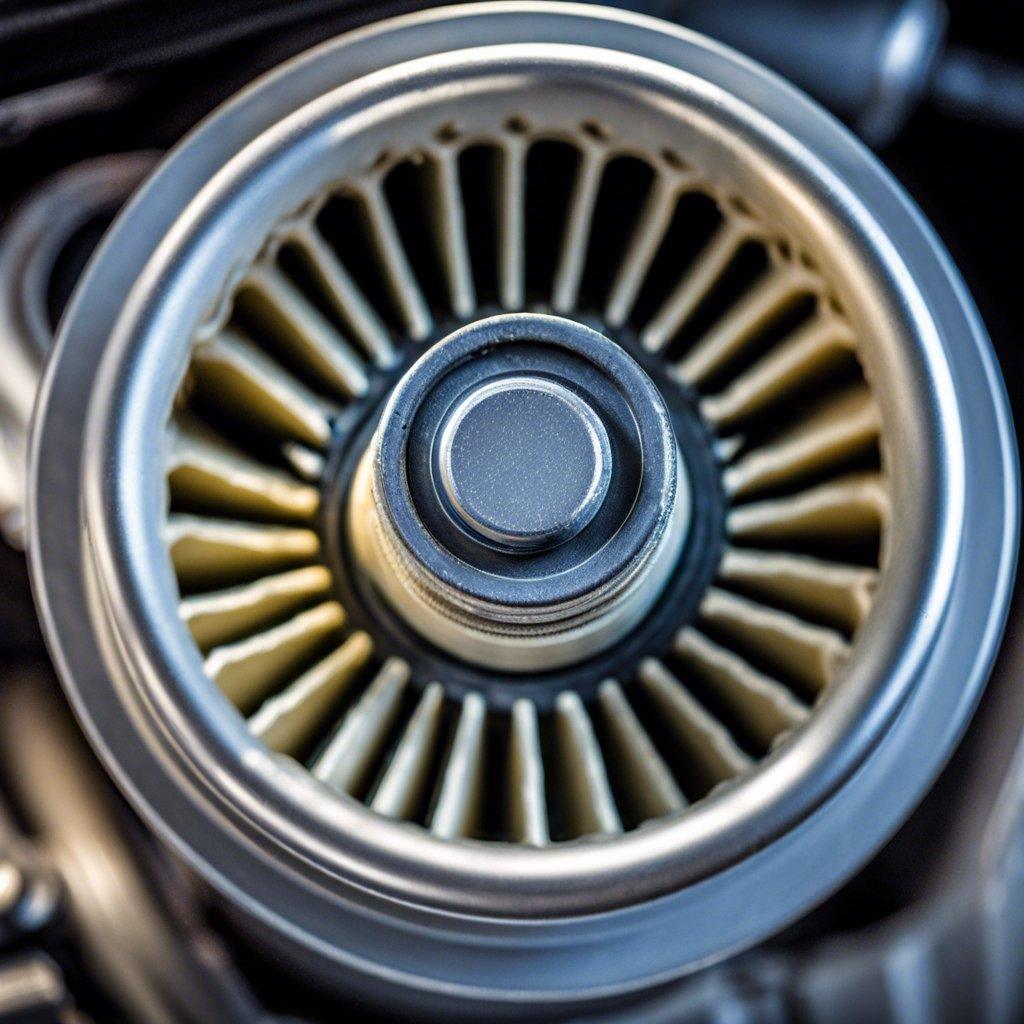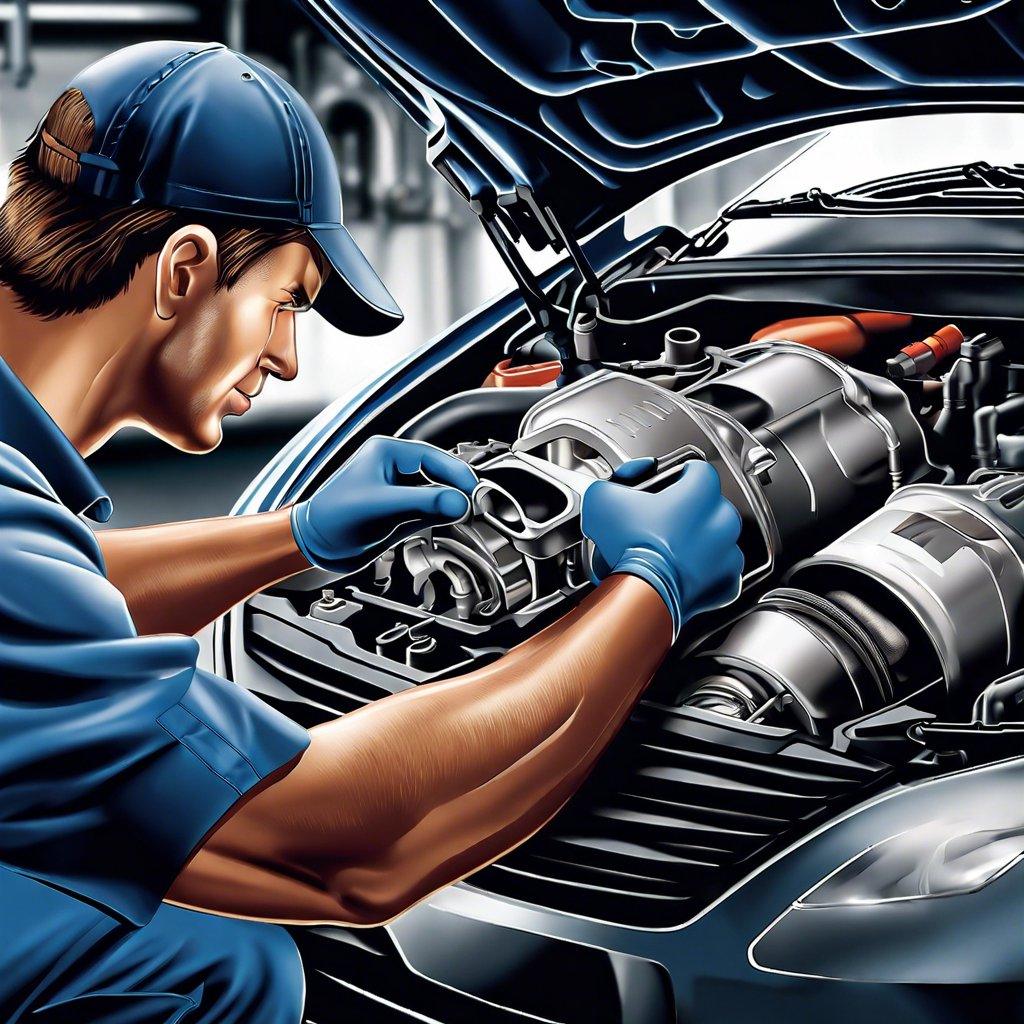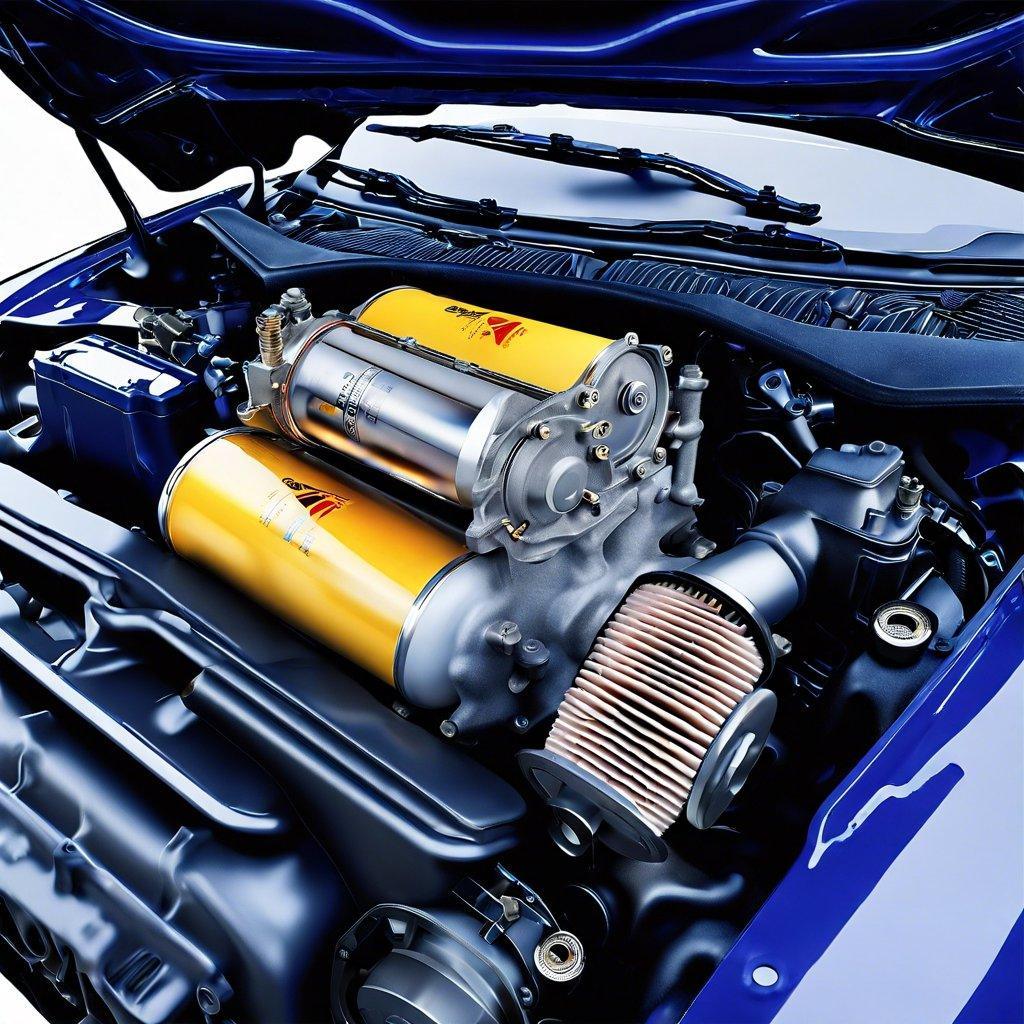Checking Your Fuel Filter: When and How
Optimizing Fuel Efficiency: The Significance of Fuel Filter Maintenance

Understanding the Role of Fuel Filters
Fuel filters play a crucial role in maintaining the efficiency and longevity of your vehicle’s engine. They are responsible for removing contaminants, such as dirt, rust, and other impurities, from the fuel before it reaches the engine. These impurities can cause significant damage to fuel injectors, carburetors, and other sensitive components, leading to reduced engine performance, decreased fuel efficiency, and ultimately, higher maintenance costs.
Recognizing the Signs of a Clogged Fuel Filter
A clogged fuel filter can have several noticeable symptoms, including:
- Decreased fuel efficiency: As the filter becomes more restricted, the engine has to work harder to draw fuel, resulting in lower fuel economy.
- Difficulty starting the engine: A clogged filter can restrict the flow of fuel, making it harder for the engine to start.
- Reduced engine power: A clogged filter can limit the amount of fuel reaching the engine, leading to a noticeable loss of power and acceleration.
Determining the Appropriate Fuel Filter Replacement Interval
The recommended replacement interval for your fuel filter can vary depending on the make and model of your vehicle, as well as the driving conditions and fuel quality in your area. It is generally recommended to replace the fuel filter every 30,000 to 50,000 miles, or as specified in your vehicle’s maintenance schedule. However, if you notice any of the aforementioned symptoms, it is advisable to have the filter inspected and replaced as needed.
Proper Fuel Filter Replacement Procedure
| Step | Description |
|---|---|
| 1. | Locate the fuel filter, which is typically located near the fuel tank or along the fuel line. |
| 2. | Disconnect the fuel lines from the filter, ensuring to catch any fuel that may spill. |
| 3. | Remove the filter and dispose of it properly. |
| 4. | Install the new fuel filter, ensuring that the flow direction is correct. |
| 5. | Reconnect the fuel lines and start the engine, checking for any leaks. |
Regular fuel filter maintenance is essential for maintaining the fuel efficiency and overall performance of your vehicle. By understanding the role of fuel filters, recognizing the signs of a clogged filter, and following the proper replacement procedure, you can help ensure your engine operates at its best and maximize your fuel savings.
Uncovering the Hidden Dangers: Identifying Fuel Filter Issues Before They Escalate
As an engineering or technology professional, understanding the importance of maintaining your vehicle’s fuel system is crucial. One often-overlooked component that plays a vital role in the smooth operation of your engine is the fuel filter. Neglecting to address fuel filter issues can lead to a host of problems, from reduced fuel efficiency to catastrophic engine failure. In this comprehensive guide, we’ll explore the hidden dangers of fuel filter problems and provide you with the knowledge to identify and address these issues before they escalate.
The Importance of Fuel Filters
Fuel filters are designed to remove contaminants, such as dirt, rust, and other debris, from the fuel before it enters the engine. Over time, these filters can become clogged or damaged, compromising the fuel flow and putting your engine at risk. Ignoring a faulty fuel filter can result in a range of problems, including:
- Decreased Fuel Efficiency: A clogged fuel filter restricts the flow of fuel, forcing the engine to work harder to draw the necessary fuel. This increased effort leads to a noticeable drop in fuel efficiency, costing you more at the pump.
- Engine Performance Issues: Reduced fuel flow due to a faulty filter can cause the engine to run rough, experience misfiring, or even stall completely. This can lead to increased wear and tear on engine components, shortening the overall lifespan of your vehicle.
- Costly Repairs: Neglecting a fuel filter issue can result in serious damage to the fuel pump, injectors, or other critical engine components. Addressing these problems can be time-consuming and expensive, making it essential to stay proactive in maintaining your fuel system.
Identifying Fuel Filter Problems
Recognizing the signs of a failing fuel filter is the first step in preventing more severe issues. Some common indicators of fuel filter problems include:
- Reduced Fuel Efficiency: If you’ve noticed a sudden drop in your vehicle’s miles per gallon, it could be a sign that the fuel filter is partially blocked.
- Engine Hesitation or Stalling: When the fuel filter becomes clogged, the engine may struggle to receive the necessary fuel, leading to hesitation, misfiring, or even complete stalling.
- Difficulty Starting the Engine: A restricted fuel flow due to a clogged filter can make it challenging to start your vehicle, especially when the engine is cold.
- Rough Idling or Vibrations: Fuel filter issues can cause the engine to run unevenly, leading to rough idling or noticeable vibrations.
Maintaining and Replacing Fuel Filters
To ensure the longevity and optimal performance of your vehicle, it’s essential to follow the manufacturer’s recommended fuel filter replacement schedule. Depending on your driving conditions and the age of your vehicle, this interval can vary. However, as a general rule, it’s recommended to replace the fuel filter every 30,000 to 50,000 miles or as specified in your owner’s manual.
Replacing the fuel filter is a relatively straightforward task, but it’s important to follow proper safety procedures and consult your vehicle’s service manual for specific instructions. Attempting to service the fuel system without the appropriate knowledge and tools can be dangerous and potentially cause further damage to your vehicle.
By staying vigilant and addressing fuel filter problems promptly, you can safeguard your vehicle’s performance, extend its lifespan, and avoid costly repairs down the line. Regular maintenance and proactive problem-solving are the keys to maintaining a healthy fuel system and ensuring your vehicle’s reliable operation.
Maximizing Engine Performance: A Comprehensive Guide to Fuel Filter Replacement
Maintaining the health and efficiency of your vehicle’s engine is crucial for optimal performance, fuel economy, and prolonged engine life. One often overlooked component that plays a vital role in this equation is the fuel filter. In this comprehensive guide, we will explore the importance of fuel filter replacement and provide you with the necessary knowledge to ensure your engine is running at its best.
Understanding the Role of the Fuel Filter
The fuel filter is responsible for removing impurities and contaminants from the fuel before it reaches the engine. Over time, the filter can become clogged with debris, restricting the flow of fuel and causing a range of issues, including decreased engine power, reduced fuel efficiency, and even engine damage.
Symptoms of a Failing Fuel Filter
Recognizing the signs of a failing fuel filter is crucial for proactive maintenance. Some common symptoms include:
- Reduced engine performance: Noticeable loss of power, acceleration, and responsiveness.
- Difficulty starting the engine: The engine may struggle to start, especially when the fuel system is under pressure.
- Increased fuel consumption: Your vehicle’s fuel economy may decrease due to the added strain on the engine.
- Misfiring or stalling: The engine may misfire or stall unexpectedly, particularly under load or during acceleration.
Fuel Filter Replacement Interval
The recommended fuel filter replacement interval can vary depending on your vehicle’s make, model, and driving conditions. As a general guideline, it is advisable to replace the fuel filter every 30,000 to 50,000 miles or as specified in your vehicle’s maintenance schedule. However, it is essential to consult your owner’s manual or a trusted automotive professional for the specific recommendations for your vehicle.
Fuel Filter Replacement Procedure
Replacing the fuel filter can be a straightforward process, but it is crucial to follow the proper safety precautions and manufacturer’s instructions. Here is a general overview of the steps involved:
| Step | Description |
|---|---|
| 1. Locate the fuel filter | The fuel filter is typically located along the fuel line, often near the fuel tank or engine. |
| 2. Relieve fuel system pressure | Disconnect the negative battery cable to depressurize the fuel system before beginning the replacement process. |
| 3. Remove the old fuel filter | Carefully disconnect the fuel lines from the old filter and remove it from its mounting location. |
| 4. Install the new fuel filter | Connect the new fuel filter to the fuel lines, ensuring a secure and leak-free connection. |
| 5. Reconnect the battery | Reconnect the negative battery cable and start the engine to check for any leaks or issues. |
Regular fuel filter replacement is a crucial aspect of maintaining your vehicle’s engine performance and longevity. By understanding the role of the fuel filter, recognizing the symptoms of a failing filter, and following the proper replacement procedures, you can ensure your engine is operating at its best, maximizing fuel efficiency and prolonging its lifespan. Remember to consult your owner’s manual or a trusted automotive professional for specific recommendations tailored to your vehicle.
Fuel Filter Inspection: Proactive Measures for Ensuring Smooth Operational Flow
Importance of Fuel Filter Inspection
The fuel filter plays a critical role in the smooth and efficient operation of any engine-powered system. It acts as a barrier, preventing contaminants and impurities from entering the fuel system, which can cause significant damage to sensitive components such as fuel pumps, injectors, and the engine itself. Regular inspection and timely replacement of the fuel filter is a proactive measure that ensures the longevity and optimal performance of your equipment.
When to Inspect the Fuel Filter
The recommended frequency for inspecting and replacing the fuel filter varies depending on the manufacturer’s guidelines and the operating conditions of the equipment. As a general rule, it is advisable to inspect the fuel filter at the following intervals:
- Routine Maintenance: During scheduled maintenance intervals, such as oil changes or other preventive maintenance tasks, it is crucial to inspect the fuel filter and assess its condition.
- Noticeable Performance Issues: If you notice any changes in the engine’s performance, such as reduced power, increased fuel consumption, or difficulty starting, it may be an indication that the fuel filter is clogged and in need of replacement.
- Fuel System Overhaul: When performing a comprehensive overhaul of the fuel system, the fuel filter should always be replaced as a preventive measure to ensure optimal system performance.
How to Inspect the Fuel Filter
Inspecting the fuel filter involves a visual examination and, in some cases, a flow test. Follow these steps to properly inspect the fuel filter:
- Visual Inspection: Examine the fuel filter for any signs of damage, such as cracks, leaks, or discoloration. If the filter appears to be in poor condition, it should be replaced immediately.
- Flow Test: Depending on the type of fuel filter, you may need to perform a flow test to ensure that the filter is not restricted. This can be done by measuring the fuel flow before and after the filter, or by using a specialized tool designed for this purpose.
- Replacement: If the fuel filter is found to be clogged or damaged, it should be replaced with a new, high-quality filter that meets the manufacturer’s specifications.
Replacing the fuel filter involves the following steps:
- Shut off the fuel supply: Locate the fuel supply valve and turn it off to prevent fuel leakage during the replacement process.
- Access the fuel filter: Depending on the equipment, the fuel filter may be located in an easily accessible area or may require disassembly of other components to reach it.
- Remove the old filter: Carefully disconnect the fuel lines from the old filter and remove it from its mounting.
- Install the new filter: Ensure that the new filter is the correct size and type for your equipment. Follow the manufacturer’s instructions for proper installation, including the orientation of the filter and the tightening of the connections.
- Restore fuel supply: Turn the fuel supply valve back on and check for any leaks. Start the engine and inspect for proper fuel flow and pressure.
Regular inspection and timely replacement of the fuel filter are essential for maintaining the optimal performance and longevity of your engine-powered equipment. By following the recommended guidelines and proactively addressing any fuel filter issues, you can ensure a smooth and efficient operational flow, minimizing the risk of costly breakdowns and downtime.




Post Comment